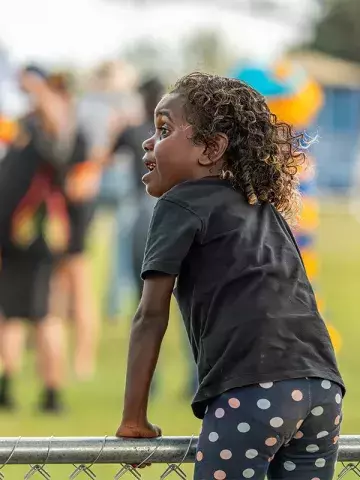Skin-control program reduces impetigo rate in Aboriginal children in remote communities
By Rebecca Jenkins
A holistic skin-control program reduced the rate of impetigo among remote-living Australian Aboriginal children, a large trial has found, with regular skin checks likely to have driven the reduction in disease.
Almost half of Australian Aboriginal children in remote areas have skin sores at any one time, researchers wrote in Lancet Child & Adolescent Health, with previous skin- control programs concentrating on biomedical initiatives that did not consider historical and cultural socioeconomic barriers to healthy skin.
The See, Treat, and Prevent (SToP) trial was an open- cohort, stepped-wedge cluster randomised trial which enrolled participants aged 0 to 18 years in nine remote communities of the Kimberley, Western Australia (WA), with the primary outcome being the burden of impetigo on those aged 5 to 9 years.
The trial, led by The Kids Research Institute Australia and Kimberley Aboriginal health organisations in partnership with the Aboriginal communities, included school-based skin checks and skin infection recognition training for community health professionals, as well as skin infection treatment training and guidance for impetigo and scabies.
Alongside identifying and treating skin infections, health initiatives such as a hip-hop video about the importance of skin health and healthy skin story books using local languages and artwork were developed in consultation with the communities.
Of the 915 children aged 0 to 18 years who had consented to take part in the study, 777 (85%) had skin checks performed on at least one of 10 possible visits between 5 May 2019 and 22 November 2022. Of these 777 participants, 448 were aged 5 to 9 years at one of the skin check visits and were eligible for the primary outcome assessment.
Researchers reported a modelled decline in the prevalence of impetigo of between 17% and 19% in children aged 5 to 9 years across the trial, with the greatest decline during an observational period of baseline skin checks before the interventional activities began.
Lead author Professor Asha Bowen, Head of the Healthy Skin and ARF Prevention team at the Wesfarmers Centre of Vaccines and Infectious Diseases at The Kids Research Institute in Perth, WA, told Medicine Today the trial used a model of school-based skin checks to optimise the number of children they could see on every visit.
However, the message about the importance of regular skin checks in areas where the burden of skin diseases is high can be translated to primary care or engagement with schools and communities more broadly.
‘There are so many opportunities for prevention and reassurance when a GP sees a child to address skin infections. It is critical to check every child’s skin for skin conditions every time you see them,’ she said.
Professor Bowen noted that researchers chose the latest, evidence-based treatment regimens that were simplest for children and families to test in the trial; however, despite extensive education there was no change in prescription patterns, with most children still receiving older treatments.
‘I would recommend that GPs prescribe three days of oral cotrimoxazole (trimethoprim and sulfamethoxazole) for children with skin sores as the least painful and optimal antibiotic for treatment,’ she said. ‘And oral ivermectin for treatment of scabies in children older than 5 years and greater than 15 kg as the oral regimen is effective and much less intrusive to apply than topical permethrin.’
Topical permethrin was required for children aged under 5 years and less than 15 kg or pregnant people.
For further advice, Professor Bowen recommended clinicians refer to the second version of the National Healthy Skin Guideline for treating and preventing skin conditions in Aboriginal and Torres Strait Islander children and communities and accompanying resources (https://infectiousdiseases.thekids.org.au/resources/skin-guidelines/).
Lancet Child Adolesc Health 2024; 8: 809-820; doi: 10.1016/ S2352-4642(24)00229-3.


